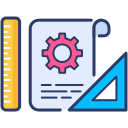Write Guides Learners Love: Best Practices for Writing Educational Guides
Chosen theme: Best Practices for Writing Educational Guides. Welcome to a space where clarity meets compassion. Here we share story-tested methods, research-backed frameworks, and practical checklists to help you craft educational guides that learners trust, remember, and return to—again and again.


Know Your Learner Before You Write a Word
Sketch a concise profile that captures goals, prior knowledge, context, constraints, and motivation. When a community college instructor shared her learners’ part-time schedules and spotty Wi‑Fi, we trimmed video segments to five minutes, added transcripts, and doubled completion rates within a month.
Know Your Learner Before You Write a Word
List what learners likely know, what they should know, and common mistakes. A simple diagnostic checklist at the start of a guide helped one math tutor uncover confusion about order of operations; a single clarifying diagram reduced errors on the first practice set by half.
Design Backward: Objectives, Outcomes, and Only What Matters
Use action verbs and observable behaviors: identify, compare, construct, evaluate. A science teacher swapped vague aims for specific outcomes and saw student reflections shift from “I read the chapter” to “I can model diffusion using real-world examples from our lab.”
Build a simple alignment table: objective, content segment, practice, quick check. When a nonprofit mapped their digital literacy guide this way, they spotted an outcome with no practice task and added a two-question quiz that improved confidence ratings significantly.
If a paragraph or example doesn’t directly advance an objective, cut or move it to an appendix. Trimming a bloated history guide by 18% reduced cognitive overload, and learners reported clearer focus during timed study sessions. Want our trimming checklist? Subscribe for the downloadable template.
Use Plain Language Without Dumbing Down
Replace jargon with everyday words, then define unavoidable terms with quick examples. We rewrote a cybersecurity guide from “implement multi-factor” to “add a second proof, like a code on your phone,” and support tickets plummeted while adoption jumped across departments.
Set a Friendly, Credible Tone
Blend professional clarity with kindness. Acknowledge tricky steps and normalize mistakes: “If this feels confusing, you’re not alone—try the checklist below.” Readers consistently report higher trust when a guide feels like a mentor, not a manual.

This is the heading
Lorem ipsum dolor sit amet, consectetur adipiscing elit. Ut elit tellus, luctus nec ullamcorper mattis, pulvinar dapibus leo.

This is the heading
Lorem ipsum dolor sit amet, consectetur adipiscing elit. Ut elit tellus, luctus nec ullamcorper mattis, pulvinar dapibus leo.
Make Learning Active: Examples, Checks, and Reflection
Offer at least two examples from different contexts to prevent pattern bias. In a budgeting guide, pairing a freelancer’s cash flow with a family’s monthly plan helped learners generalize principles without clinging to one scenario.
Accessibility and Visual Design That Serve Everyone
Use descriptive headings, informative link text, and alt text that explains purpose, not just appearance. A museum’s online guide became navigable by screen readers after we restructured headings, and attendance from remote learners increased during their virtual program.


Accessibility and Visual Design That Serve Everyone
Generous margins, consistent typography, and high-contrast color choices reduce strain and improve focus. When we adjusted line length and spacing in a physics guide, error rates on vector problems dropped, suggesting layout clarity reduced unnecessary cognitive load.
Test, Iterate, and Measure What Matters
Invite five to eight representative learners to try a draft. Watch quietly, note hesitations, and time steps. We discovered a confusing button label in a digital guide; changing two words shortened task time by thirty seconds across the cohort.

